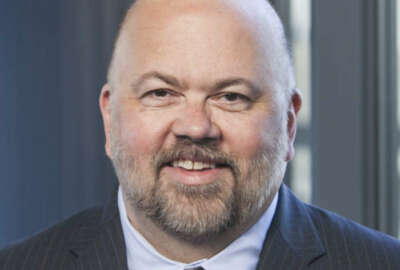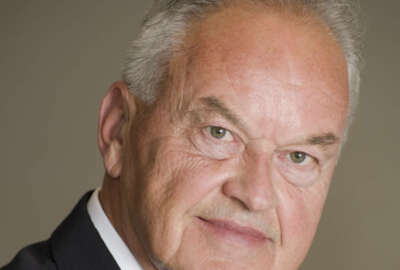
Fixing federal HR begins with staffing
Former Homeland Security CHCO Jeff Neal says any rethinking of HR has to begin with staffing.
This column was originally published on Jeff Neal’s blog, ChiefHRO.com, and was republished here with permission from the author.
A few weeks ago, I wrote a post titled Federal HR is Mission Critical. Is It Mission Capable? I promised it would be the first of a series that looks at what is wrong with HR and some ideas on how to fix it. As I said then, I am not talking about tweaking it around the edges. The entire federal HR process and structure, from top to bottom, from OPM to HR offices to federal managers, needs to be completely reimagined. We can take the usual approach and train a few folks, throw in some category ranking, add a special hiring authority here and there, and tell people to work smarter, harder and faster. That incremental approach to reform will not produce the quality of HR service that agencies need. Nor will it change the often negative perceptions federal employees and managers have of their HR teams.
Any rethinking of HR has to begin with staffing. If you ask most managers, employees and applicants what is wrong with federal HR, they will tell you it is the hiring process. Finding someone who likes the process is akin to finding a leprechaun with a pot of gold. Sounds like a great idea, but most people think it is a fantasy.
The problem is that it is more than the rules and regulations that create the problems with hiring. HR owns a big chunk of the responsibility too. I do not blame the HR Specialists — they are mostly doing the work the way they were trained to do it. Sadly, most of them are being trained to do the work the same way I was trained 38 years ago. And I was trained the same way the people who trained me were trained in the 1960s. The role of a Staffing/HR Specialist has not changed significantly in all those years. Yes, there is a lot more automation that was supposed to make things easier. The move to greater automation might have served as the impetus for totally rethinking the role, but it did not. The move to automated systems was followed by the rise of the internet and social media. The role they play in our society and in the labor market might have served as the impetus for totally rethinking staffing, but it did not. Many agencies have consolidated HR roles into generalist positions and/or consolidated HR offices into larger HR centers. That consolidation might have served as the impetus for rethinking staffing, but it did not.
More Commentary

Happy birthday to the National Park Service
Most federal HR jobs are classified using OPM’s Classification Standard for Administrative Work in the Human Resources Group, GS-0200. The standard, written 16 years ago, predates the rise of social media and the rapid changes in the U.S. labor market. It includes parenthetical titles that can be used for specialized jobs. For example, the Recruitment and Placement titles can be used alone, in combination, or in combination with another title, such as Classification. The standard describes recruitment and placement as “Work that involves recruiting, examining, selecting and placing employees; performing job analysis; workforce planning and analysis; and advising management in identifying, attracting, and retaining a high-quality and diverse workforce that is capable of accomplishing the organization’s mission.” One of the most popular games in federal HR is playing “pin the tail on OPM” and blaming OPM for all of the problems. OPM is not at fault here. This job classification standard is old, but it actually is not bad. It gives agencies a lot of room to define HR jobs in ways that make sense. The problem is not with the standard, it is with how the jobs are constructed and how they work.
One of the problems is that we have a lot of HR Specialists who are generalists. Think about that. A specialist generalist? It is illogical and makes no sense. That move is part of the shift in the past 20 years to lowest common denominator thinking in HR. The idea that one person is going to be an expert in many fields is great in theory, but usually terrible in practice. So is the idea that we should move to generic job descriptions, generic vacancy announcements and generic everything else. Somewhere along the way, we grew fond of the idea that customers should have “one belly button to push.” I understand why people asked for that. They do not want to have to go through a list of 20 HR folks to find one who can answer their questions. So what we got was one HR person who cannot answer questions, or frequently gets the answers wrong, or who just says no. If we want to get great results, we have to accept the idea that not everything is alike, and that we really do need experts who know what they are talking about. Before anyone says “Wait — what about doctors? They have specialists and generalists and that seems to work out well for work that is far more complex than HR.” Bad analogy. Doctors who are general practitioners and those who are specialists start with the same education and training. HR does not work that way. There is no underlying set of HR skills that make every HR person, whether they be generalists or specialists, qualified to do HR work.
Having experts does not mean managers and employees would need to go through a big list of people to find one who knows the answer. There are alternatives that make a lot more sense. I believe the best approach is to rethink staffing work and move to a team model with a combination of skilled specialists. Let’s start with recruiting. What most agencies do most of the time is not recruiting. It is trolling for applicants on USAJobs. Take a generic job description, find a canned job announcement that sort of fits, tweak it and post it on USAJobs for a week or two. That is what many agencies call recruiting. If the right applicant happens to be looking on USAJobs during that week or two, they have a chance, albeit a small one, of making it through to a hiring manager. It is a bit like fishing in your aquarium and wondering why you cannot catch anything. The fact that so much of the process has been made generic means the scores for applicants may be based not on what the agency really needs/wants, but rather on some generalized set of requirements. The end result is that the hiring manager is unhappy, the applicants are unhappy, and everyone points the finger at HR or blames the big, bad hiring process. Let’s be real — if reform makes the process simpler and agencies continue using generic everything and trolling for applicants rather than recruiting, little is going to change.
A Team Approach Makes the Most Sense
Because describing and classifying jobs is so closely linked with the hiring process and with many other aspects of traditional staffing work, the work that they do should be grouped together. It already is in many agencies. We probably went too far in combining the work, because one of the common complaints about HR is that it is hard to find someone who is still a good classifier. When staffing and classification are combined into a single job, the classification expertise often gets lost. Agencies rely on automated systems for job classification, even though those systems do not really classify jobs. They simply make it easier to cut and paste duties together based on earlier work. Much like staffing tools have been abused to the point where many staffing people do not really know how to do the work any more, many people doing classification have no idea how to really do the job right. If we want to have great HR service, we have to start with HR folks who are trained to do the job. That means not being overly reliant on the software that was designed to assist HR. That also means moving back in the direction of a degree of specialization. That does not mean returning to a 1950s HR office (if we go back that far we would have to call it Industrial Relations), with four divisions doing staffing, classification, training and labor and employee relations. What it really means is customer-focused teams that include a combination of general HR skills that all of the team members would possess, combined with team members who have more specialized skills.
Such a team might have several specialists who focus on customer service and doing the more routine work. Each team would also include one or more recruiting and marketing experts who are able to engage in real recruiting and in improving the agency’s employment brand. Depending on the amount of change the agency is experiencing, teams might also include a placement specialist to help with in placement and out placement for displaced employees. Teams should also include at least one classification specialist who can handle more complex job classification issues, as well as a compensation specialist who understands the labor market and the pay flexibilities available to the agency. The team approach has been used by some agencies and it works. With generalists handling routine work and the primary interface with customers is performing a sort of HR triage to hand work off to more specialized team members, customers are not required to call a dozen people to get an answer or get good service.
At the same time, agencies move to a team approach, they should also abandon the idea of widespread use of generic job descriptions and generic or recycled job announcements. Those ideas, intended to make life easier for HR specialists, are so internally HR-focused and customer-hostile that they have outlived whatever usefulness they might have had. The only time an agency should use a generic job description is when they have a generic job. If you have 300 basket weavers that all do exactly the same work, then a generic basket weaver job description makes sense. Otherwise, it is a problem.
There are many other aspects of HR work that need to be reinvented for the 21st century. The idea that we can have HR offices that look much like those of the 1990s, or worse, the 1950s, just does not make sense today. Every aspect of employment, hiring, workplaces and the employer-employee contract is changing now. HR must adapt itself to that market if it hopes to emerge as a respected and vital part of an agency. Failure to do that is going to lead to more outsourcing, less respect and more headaches.
Jeff Neal is a senior vice president for ICF International and founder of the blog, ChiefHRO.com. Before coming to ICF, Neal was the chief human capital officer at the Department of Homeland Security and the chief human resources officer at the Defense Logistics Agency.
Copyright © 2025 Federal News Network. All rights reserved. This website is not intended for users located within the European Economic Area.




